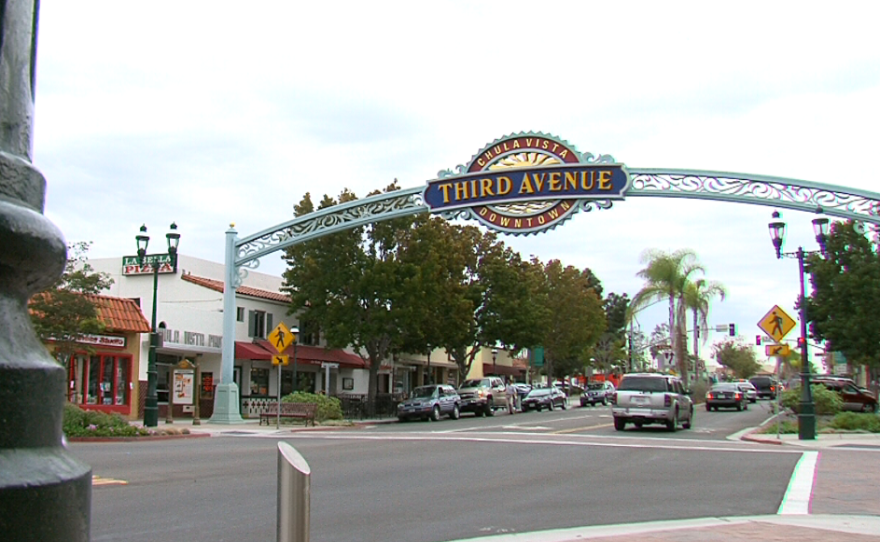Early this month, when San Diego County first released the number of COVID-19 cases broken down by ZIP code, those in Hillcrest, La Jolla and Normal Heights topped the list. But county health officials cautioned against reading too much in the numbers.
“To me personally, that information doesn’t mean very much,” Nick Yphantides, the county’s medical director, said at the time.
But in the past three weeks, the numbers paint a different picture of how the pandemic is spreading through San Diego County. As of Thursday, Hillcrest is the only one of those neighborhoods still in the top three.
Meanwhile, the number of cases in lower-income communities south of Interstate 8, including ZIP codes in City Heights, National City, Chula Vista and El Cajon, has risen significantly.
Health experts say these numbers do mean something.
“I do think that ZIP code is an important determinant of health, perhaps more important than your genetic code,” said Maria Rosario Araneta, a professor of epidemiology and the assistant dean of diversity at UC San Diego’s medical school.
“If you look at the mean incomes of these neighborhoods, their average incomes are less than the average in San Diego, certainly less than the average incomes in La Jolla.”
RELATED: County Releases Home ZIP Codes Of COVID-19 Cases, But Does That Tell Us Anything?
Lower-income communities generally have higher rates of pre-existing conditions like diabetes and obesity, greater housing density and more reliance on public transportation. These factors combine to increase their risk for COVID-19 infections and make them more likely to have serious cases, according to Araneta and other health experts.
“Those things put them at greater risk when they get a respiratory virus,” said Rodney Hood, a physician practicing in low-income areas of southeast San Diego. “I’m concerned the issue may be greater in African American communities because based on all the data I’ve seen, they’re not being tested at the same rates.”
Based on the data released Wednesday, Pacific Islander, black and Latino residents have the highest number of cases per 100,000 residents in San Diego County.
Targeted testing
Both Araneta and Hood want to see more targeted testing in lower income and minority communities throughout San Diego. Hood said he’s working with UC San Diego to launch more testing sites in his community. Araneta said she’s hoping to replicate a model used at UC San Francisco where private-public partners are conducting more COVID-19 tests in historically marginalized communities.
“There has been no screening that most folks have been aware of in the southeast part of San Diego,” Hood said. “People here are seeing screenings taking place in Scripps and Sharp in La Jolla, and they’re saying, ‘Who’s worried about us?’”
Officials with the San Diego County Health and Human Services Agency said the change in numbers could be due to socioeconomic conditions and the proximity to the border.
Wide differences can exist even in neighboring ZIP codes within the same city.
“I think a lot of disparities you see throughout the United States are really based on income inequalities,” said Chula Vista Mayor Mary Salas. “Here in the city of Chula Vista we even see the disparities between our ZIP codes.”
As of Wednesday, the 91911 ZIP code in lower-income western Chula Vista has 108 cases. The 91914 ZIP code in the more affluent part of the city has 14.
“There are a variety of circumstances that may lead to that,” Salas said. “It may be as simple as a lot of our workers are in the healthcare industry. And a lot of other workers are traveling outside of Chula Vista for essential businesses they’re working in.”
The task of restarting the local economy has an urgency in working class communities. In El Cajon, which has 211 cases, officials want to reopen businesses to minimize the financial fallout for vulnerable residents.
“A lot of our businesses are first-time businesses for recent immigrants,” said Graham Mitchell, El Cajon’s city manager. “Rebounding from this is going to be a challenge.”
Hope for more support
Diana Ross, executive director of Mid-City CAN, a community advocacy group based in the City Heights neighborhood, said she is not surprised by what the recent numbers are showing.
“What this pandemic has really done is laid bare the disproportionalities that have existed prior to COVID-19,” Ross said.
Before the pandemic hit California, Ross said her organization was conducting census surveys to ensure City Heights residents were accurately counted. Her team is still raising awareness about the census, but now she’s asking residents about how the coronavirus has affected their lives.
“I’m hearing from a lot of community members. They’ve lost their jobs. They can’t be evicted, but they’re gonna be on the hook for double the rent at the end of the eviction moratoriums,” Ross said. “When we start to think about how we heal and recover from COVID-19, families are going to be starting from zero.”
Ross is hopeful that a silver lining of the pandemic will be more long-term supports for low-income residents.
“It’s an opportunity to deep-dive and to look for policy solutions and systemic solutions,” she said. “Why do we have a housing crisis to begin with? Why do we have disproportionate health outcomes for black and brown communities?”








